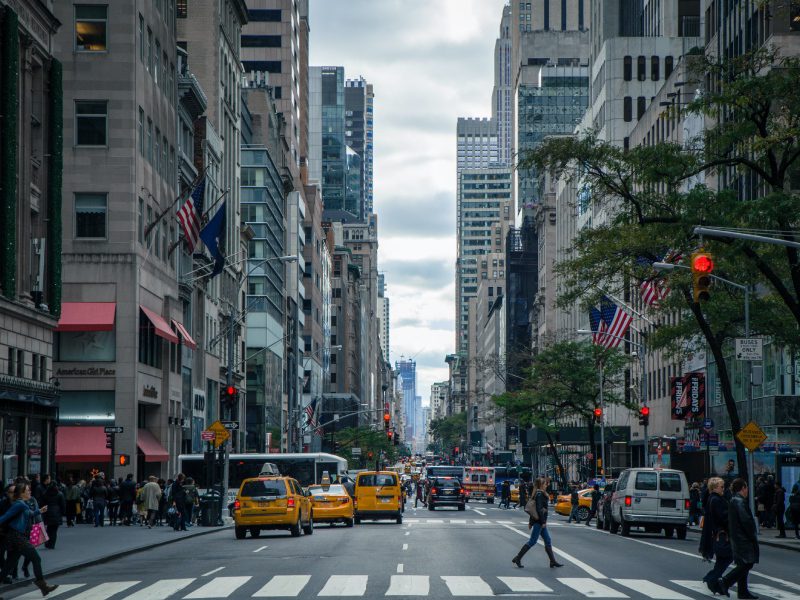PEDESTRIAN ACCIDENTS AND INJURIES: IMPORTANT FACTS

Pedestrian accidents involving motor vehicles are among the most devastating and life-altering types of accidents that can occur. It’s no wonder that, with the average weight of a midsize passenger vehicle in excess of 3,300 pounds and large vehicles exceeding 4,400 pounds, the impact with a person can be catastrophic even if the vehicle is traveling just 10 mph. The factors contributing to serious injuries in vehicle/pedestrian accidents are obvious but bear stating:
1) There is “0” protection from the impact because, instead of the body of a vehicle absorbing the force of the impact, the human body absorbs the impact directly; there is no buffer between the vehicle and the person;
2) The huge weight differential between a 3000+ pound vehicle and a person means that the vehicle “always wins”. The heavier the object, in this case a vehicle, the greater the force it generates upon impact and the greater the chance that a person will sustain serious or fatal injuries under those circumstances.
In fact, in 2020 we saw the largest-ever nationwide increase in pedestrian deaths recorded in a single year, according to the Governors Highway Safety Association’s 2020 report on pedestrian fatalities by state. Fortunately, Illinois actually saw a decrease in the number of pedestrian deaths with a total of 155 in 2020, compared to 171 in 2019.
Even one pedestrian death is one too many. Unfortunately, the increase in national pedestrian fatalities in 2020 continues a decade-long pattern of rising pedestrian deaths.
Between 2010-2019, pedestrian deaths increased by 46%
3) The elderly and young children are most often the victims of pedestrian accidents according to data from the National Highway Traffic Safety Administration (NHTSA).
Pedestrians aged 65 and older accounted for 20% of all pedestrian deaths and an estimated 10% of all pedestrian injuries, and one(1) in every five(5) children under the age of 15 killed in traffic crashes were pedestrians according to data from 2017.
4) Alcohol-paired drivers and pedestrian: almost half (47%) of crashes that resulted in a pedestrian fatality involved alcohol for the driver and/or the pedestrian. Again the reasons are obvious, but bear repeating:
a. alcohol dulls the senses and increases the reaction time to the presence of others on the road, be that other vehicles or pedestrians. In other words, a drunk driver will not be capable of reacting swiftly – braking quickly or maneuvering the vehicle – to avoid hitting a pedestrian;
b. drunk drivers are more likely to fall asleep behind the wheel and crash into other cars and pedestrians;
c. drunk drivers, especially those operating their vehicles at night, may not see pedestrians at all!
The statistics on pedestrian accidents, even the nonfatal, are staggering and sobering:
According to the Center for Disease Control and Prevention (CDC), as estimated 137,000 pedestrians were treated in emergency rooms for nonfatal crash-related injuries in 2017. Per trip, pedestrians are 1.5 times more likely than passenger vehicle occupants to be killed in a car crash.
Not every pedestrian accident is avoidable, no matter how cautious we are, but the following safety tips will help decrease the likelihood of sustaining injuries, or worse.
PEDESTRIAN SAFETY TIPS
* BE AWARE OF YOUR SURROUNDINGS: Avoid using electronic devices, such as earbuds, headphones, etc. while walking since these devices can cause distractions and cause you to be oblivious to your surroundings: If you are engrossed in the music or podcast you’re listening to, you may not notice that a vehicle is speeding and may not brake in time to stop at the intersection you are attempting to cross, etc…..
* BE VISIBLE: Increase visibility at night by carrying a flashlight and wearing reflective clothing when walking. The reasons are obvious: drivers are less likely to hit you if they see you!
* WALK THIS WAY: Walk on the sidewalk or path instead of the road. If a sidewalk or path is not available, walk on the shoulder FACING traffic.
* CROSS ROADS: Simple: cross the street at a designated crosswalk or intersection, whenever possible. You are less likely to be struck by a vehicle if you are walking where you are supposed to be!
Throughout my career as a personal injury attorney, I have represented many individuals you have been the victims of pedestrian/vehicular accidents. Some were fortunate to only sustain minor injuries and make a full recovery, while others sustained life-threatening and life-altering injuries from which they never fully recovered.
In every case, my goal was to vigorously represent the interest of my clients and obtain the most compensation for their injuries and losses.
The cases and clients vary, but the goal remains the same: vigorous representation to secure the most compensation.
If you or a loved one has been injured in a pedestrian/motor vehicle accident, contact us at (312) 357-0733 for a FREE NO OBLIGATION consultation to discuss your particular situation. Please do not delay as there are time limits to bring a claim/lawsuit for personal injuries.